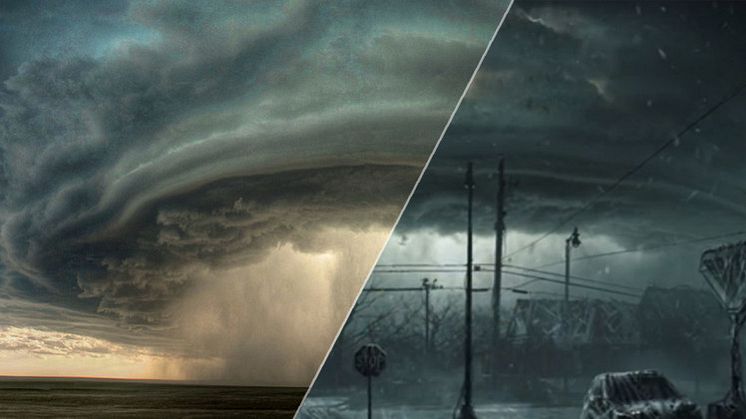
News -
Photographer thunderstruck by photo rip-off
Have you ever seen something on your TV screen and thought, “hey that looks like part of my work?” Well it happened to photographer Sean R. Heavey not once, but twice.
Heavey claims a 2010 photo he took of a supercell thunderstorm, which he called The Mothership, was used by Netflix in their hit series Stranger Things and a Netflix feature-length movie, How It Ends.
The photographer noticed a similarity in a scene in Stranger Things to his storm photo, in the first and fourth episodes of the second season of the show. He also noticed similarities between his work and a concept art photo in a Beyond Stranger Things episode.
Beyond Stranger Things is a recap show that shows behind-the-scenes footage for the series Stranger Things.
In How It Ends, a feature-length movie by Netflix, Heavey spotted a supercell above the characters in a scene 42 minutes in. Heavey claims that the company used his photo to design the storm.
Heavey said that despite repeated attempts, Netflix has failed to remove the infringed material. He has filed a suit in US District Court in Great Falls with an attorney who specialises in visual artists and copyright infringement.
The lawsuit emphasises the hard work put in by Heavey to obtain the photo. It said Heavey tracked and followed the storm depicted in “The Mothership” for many hours, beginning as it crossed the Montana/Canada border heading South.
And that he “used his technical expertise to digitally combine four independent, vertically-framed panoramic photographs” to show the full scale of the storm cell and to create The Mothership.
The four photographs combined to create The Mothership were the result of numerous sequences of experimentation by Sean with “various framing, exposure, shutter speed, and movement options.”
The lawsuit is currently looking to prevent Netflix from using the photo in any way without permission. It is also seeking damages of an unspecified amount and legal fees.
Netflix’s attorney Jarin Jackson said that the “concept art is not virtually identical”.
It also claimed that the concept art photo has a small child looking over Stranger Things’ fictional city whereas Heavey’s photo does not.
The letter also said the only similarity that exists between the concept art and Heavey’s photograph is the use of similar cloud formations.
“Copyright law, however, does not protect objects as they appear in nature.”
In this case, Heavey did insert a watermark at the bottom right side of his photo. He also registered the photo in November 2010 with the United States Copyright Office, and the photo has been used many times.
This is not the first time the show Stranger Things has been accused of stealing.
Filmmaker Charlie Kessler had earlier this year filed a lawsuit against the creators Matt and Ross Duffer for stealing his idea for the show.
He claims he pitched the idea for a series about government experiments to Matt and Ross Duffer at the TriBeca Film Festival.
The Duffers would go on to create the show Stranger Things at Netflix.
